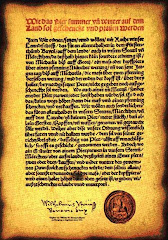
In earlier postings I spoke about the Loire Valley and some of the wines. There are many components that go into making wine, but certainly one of the most important is the dirt. In a certain place, a winemaker can expect to produce a certain type of wine. This depends on climate and local weather. It certainly depends on the grape variety. But consider the dirt.
What is the top soil? What is it made of? How about the sub-soil? And maybe the bedrock? Is the top soil deep or shallow? Does the top soil lose or retain moisture? Are the vines able to penetrate the sub-soil to seek out nutrients and moisture? What happens when a vine does this? Can the vines seek deep roots to protect themselves from surface freezing of the soil in the winter and can they protect themselves against a dry growing season?
All these questions pertain directly to what we call TERROIR and it’s direct effect on the wines produced in a certain area. When all human influence is filtered out, what remains is the terroir, that special sense of place that can make the difference between an OK wine and a great wine.
The terroir does not guarantee a great wine. But certain types of terroir are more like to produce great wines than others. Certainly, the skill of the winemaker and vineyard manager are immensely important. But there are time tested characteristics that, tested over hundreds and hundreds of years, indicate where the best dirt is.
Indeed, as far back as the Etruscans and the Ancient Greeks, where a wine was made had a measurable effect on the choice of the grape variety as well as the price of wine produced.
So next time you try a well made wine, think dirty thoughts. But in a nice way.
Cheers.






